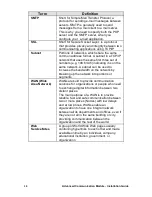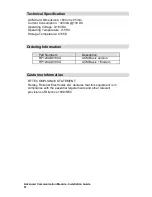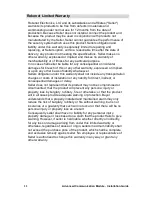
Advanced Communication Module - Installation Guide
49
Appendix – C: Common Terms and Definitions
Definition
Term
Short for Dynamic Host Configuration Protocol;
a protocol for assigning dynamic IP addresses
to devices on the network.
DHCP
An internet service that translates domain
names into IP addresses
DNS
Domain Name
System/Service
Domain names are typically in a three-level
format. The top level denotes the type of
organization, e.g. “com” or “edu”; the second
level is the top level plus the organization
name and the third level identifies a specific
host server at the address, such as the “www”.
A domain name is ultimately mapped to an IP
address, but two or more domain names can
be mapped to the same IP address.
The unique name that identifies an Internet
site. Domain Names always have 2 or more
parts, separated by dots, e.g.
www.rokonet.com
Domain Name
Telecommunications networking protocol;
a standard computer interconnection method
with a data rate of 100 megabits per second .
The original specification requires coaxial
cable as the communications medium, but
costs have been reduced through the
employment of simple paired wires
Ethernet
Number that uniquely identifies each computer
on the Internet.
IP Address
A combination of hardware and software that
links two types of networks.
Gateway
Communications network consisting of many
computers within a local area, such as a single
building or company complex
LAN
Device connected to a network, e.g. client,
server, hub, ACM module etc.
Node
Two or more computers and peripheral
equipment (e.g., printers) that are connected
with one another for the purpose of
exchanging data electronically.
Network
Hardware interface by which a Computer
communicates with another device or system
Port
Short for Post Office Protocol; a protocol used
to retrieve an e-mail from a mail server.
POP3





































